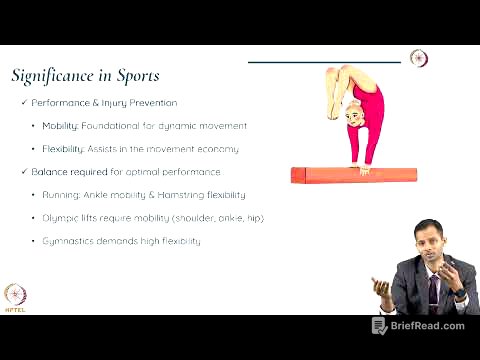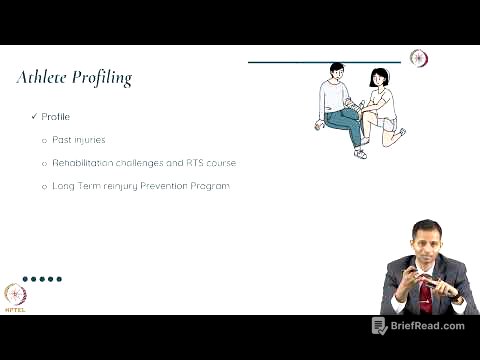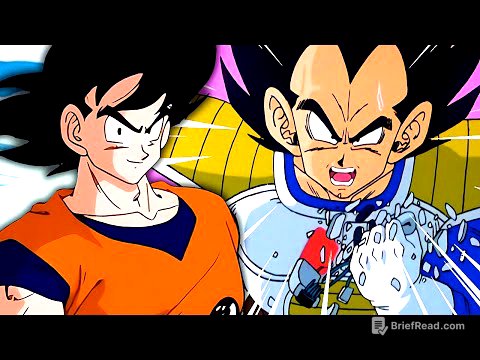TLDR;
The presentation addresses the critical need for educational reform, highlighting the shortcomings of traditional teaching methods and advocating for the adoption of radiant thinking to unlock students' infinite mind power. It emphasizes the importance of understanding how the brain processes and stores information, debunking the myth of left-brain versus right-brain dominance, and promoting the use of visual aids, keywords, and mind mapping to enhance learning and memory.
- Education system needs a reboot.
- Radiant thinking is one of the keys that will help students perform better in high school and in school in general.
- We think in terms of pictures.
Introduction: The State of Education [0:19]
The presenter starts with a quote emphasizing the long-term impact of education. He reflects on his own childhood dreams and contrasts them with the challenges faced by today's youth in realizing their aspirations. He questions the notion of education as the "greatest equalizer," citing a study from the Ministry of Education that reveals a significant drop in student numbers between grades 8 and 12, indicating a systemic issue. The presenter highlights that, based on current results, only a small fraction of students will achieve the marks needed for tertiary education, raising concerns about the fate of the rest.
The Need for a Reboot: Radiant Thinking [3:23]
The presenter suggests that the education system requires a "reboot," proposing "radiant thinking" as a key to improving student performance. He stresses the importance of understanding how the mind works to fully appreciate radiant thinking. He explains that each person has one trillion brain cells (neurons). He debunks the traditional categorization of students into left-brain (analytical) and right-brain (creative) groups, asserting that modern research shows both hemispheres work together.
How the Brain Stores Information [5:38]
The presenter explains that everyone possesses mental skills such as language, number, logic, rhythm, color, imagery, and spatial awareness. The brain stores information through patterns, whether it's the taste of water, a handshake, or a memory. Each brain cell connects to approximately 10,000 others, resulting in a vast number of possible combinations. The presenter illustrates the immense power of the brain by stating that the number representing the total possible combinations would require a paper 10.5 million kilometers long to write down.
The Infinite Mind Power [8:24]
The presenter emphasizes the infinite mind power each individual possesses, countering the notion of anyone being "stupid." He attributes the reason for children failing to the way information is fed into their brains. Traditional note-taking methods, such as summaries and bullet points, do not cater to all mental skills, hide keywords, are difficult to remember, stifle creativity, and take time to compile.
Scientific Experiments on Learning [10:01]
The presenter references a study by Dr. Keith Howe of Exeter University, which found that students who used keywords performed best, while those with complete notes performed worst. He also mentions an experiment by Dr. Ralph Haber in 1970, where participants viewed 2,560 photographs and demonstrated an 85-95% recall rate, even when the viewing time was reduced to one second. This illustrates the power of visual memory.
Imagination and Association [12:11]
The presenter suggests that the "food of the mind" is imagination and association. He uses images to demonstrate how people fill in the blanks with their creativity and associate certain visuals with specific concepts. An experiment involving the word "mango" shows that people think in pictures rather than words.
Radiant Thinking Explained [14:48]
The presenter introduces radiant thinking, developed by Tony Buzan in the 1970s, which is neuron-shaped, stimulates imagination, promotes association, fosters creativity, and improves memory. He outlines guidelines for implementing mind mapping, including using color, images, basic ordering ideas, and keywords. He provides an example of how a student would use mind mapping for geography, emphasizing the use of images and keywords.
Conclusion: Call to Action [16:23]
The presenter concludes by stating that mind mapping is useful in various situations, including business and problem-solving. He shares the mind map he used to prepare his presentation. He urges the audience to "press ctrl alt delete" on the education system and emphasizes that change is necessary. He encourages the audience to consider their role in helping learners fulfill their dreams and suggests researching mind mapping and radiant thinking. The presentation ends with a quote by Anatole France, emphasizing the importance of cultivating the will in education.









